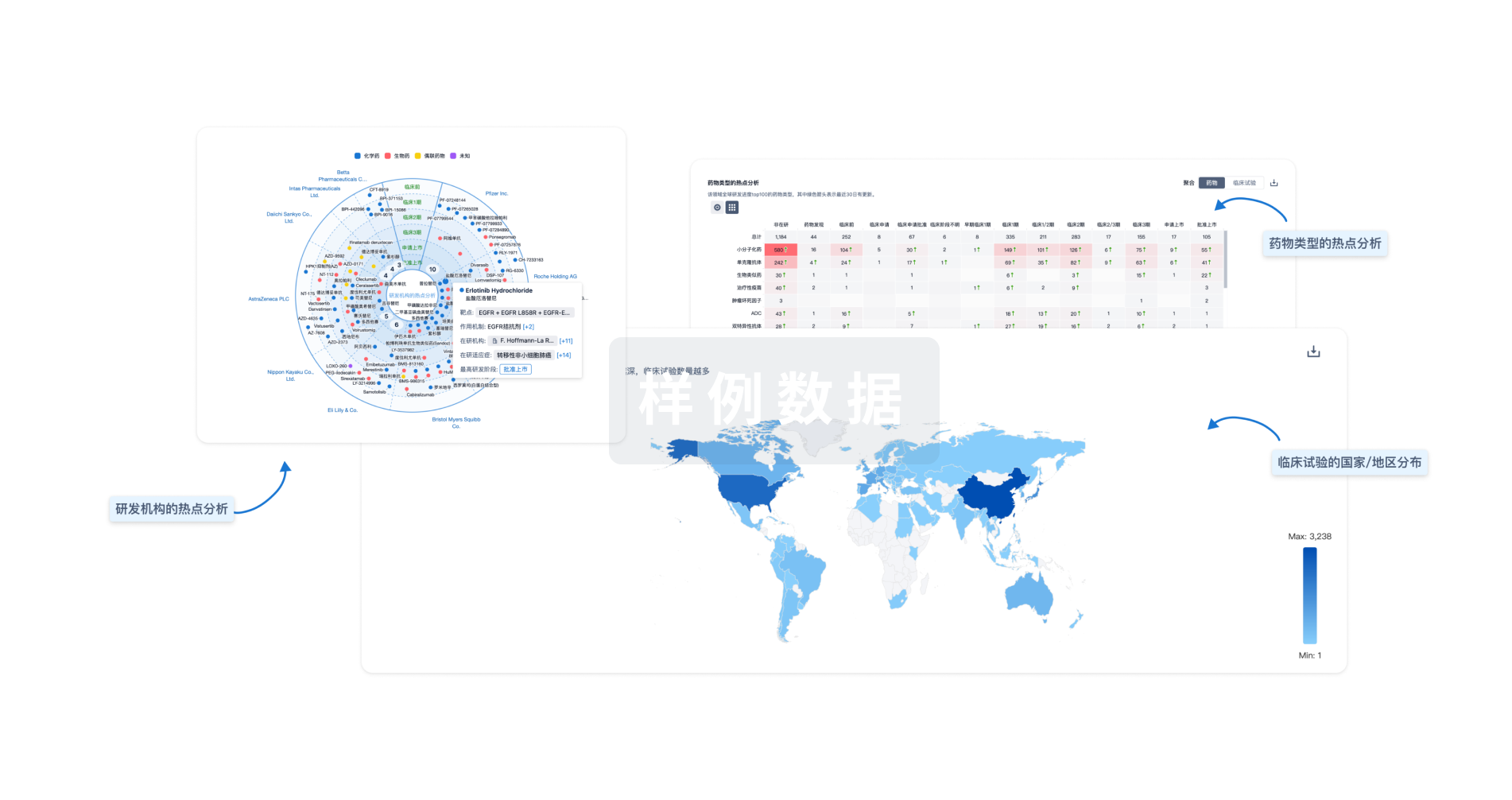预约演示
更新于:2025-05-07
Coffin-Siris Syndrome
Coffin-Siris综合征
更新于:2025-05-07
基本信息
别名 COFFIN-SIRIS SYNDROME、CSS、Coffin Siris syndrome + [16] |
简介 A rare genetic disorder with an undetermined pattern of inheritance affecting mostly females. Clinical signs at birth include recurrent respiratory infections, poor feeding, hypotonia, joint laxity and characteristic shortened fifth digits with hypoplastic or absent nails and craniofacial appearance: microcephaly, wide nose and lips, sparse scalp hair but thick eyebrows and eyelashes. The clinical course includes developmental delays in motor skills and speech with associated moderate mental retardation. |
关联
5
项与 Coffin-Siris综合征 相关的临床试验NL-OMON54120
Tackling defective Prefrontal development in Mendelian Syndromes: a compelling (pre-) clinical integrative approach - Promise
开始日期2022-11-17 |
NCT04636723
Neuroinflammation in Chronic Systemic Symptoms (CSS): Proof-of-Concept Study Using PET and EEG/ERP Biomarkers
The purpose of the present research protocol is to investigate and identify translocator protein 18kDa, MRI DTI, and EEG/ERPs, markers of Chronic Systemic Symptoms (CSS).
开始日期2021-02-22 |
申办/合作机构 |
NL-OMON48746
Finding suitable clinical endpoints for ARID1B-related intellectual disability - Endpoints in ARID1B patients
开始日期2018-11-22 |
100 项与 Coffin-Siris综合征 相关的临床结果
登录后查看更多信息
100 项与 Coffin-Siris综合征 相关的转化医学
登录后查看更多信息
0 项与 Coffin-Siris综合征 相关的专利(医药)
登录后查看更多信息
2,334
项与 Coffin-Siris综合征 相关的文献(医药)2025-06-01·Oral Oncology
Cavernous sinus syndrome in a patient with occult nasopharyngeal carcinoma: A diagnostic challenge
Letter
作者: Jiang, Xiao ; Zhang, Ye ; Wang, Wei ; Zhu, Yingming ; Xu, Baolei ; Zhou, Ping
2025-06-01·Neurology Clinical Practice
Role of Central Sensitization Syndrome in Patients With Autonomic Symptoms
Article
作者: Novak, Peter ; Witte, Aleandra ; Marciano, Sadie P.
2025-05-13·Neurology
One-Year Radiologic Progression in Sporadic and Hereditary Cerebral Amyloid Angiopathy
Article
作者: Wermer, Marieke J.H. ; Voigt, Sabine ; van Harten, Thijs W. ; Terwindt, Gisela M. ; Koemans, Emma A. ; van Zwet, Erik ; Rasing, Ingeborg ; Schriemer, Sanne ; van der Plas, Maaike C. ; van Osch, Matthias J.P. ; Schipper, Manon R. ; van Dort, Rosemarie ; van der Zwet, Reinier G.J. ; van Walderveen, Marianne ; van Etten, Ellis S. ; Kaushik, Kanishk
8
项与 Coffin-Siris综合征 相关的新闻(医药)2024-11-24
·奇点网
*仅供医学专业人士阅读参考
备婚、装修、协调家庭关系,今年从四月到十一假期结束前,所有事情都赶在一起,简直令人备受煎熬、压力山大。糟心事不断、争执没够、催促不停,撑着人坚持下去的就是一句“事情过去一切都会恢复原样的”。
可是等结束后,一照镜子,已经多出了好几根碍眼的白头发,拔下来后根据白发的程度回推哪个时间段发生了什么……
压力催人老,这句话不假啊!
美国明尼苏达大学的Alessandro Bartolomucci等人发现,长期社会压力会导致小鼠大脑堆积衰老细胞并诱导DNA损伤,其中受罪最为主要的细胞类型当属神经元,在这个过程中衰老调控因子p16Ink4α是不可或缺的一环。
清除p16Ink4α阳性细胞能够逆转细胞衰老现象,但是衰老的痕迹却无法因此抹除,长期社会压力引起的代谢问题、体力虚弱、毛发变色等衰老现象依旧存在。
论文于近日发表在《自然·衰老》杂志上[1]。
论文首页截图
随着社会压力对健康影响的研究逐渐深入,人们发现,长期生活压力会显著缩短寿命,增加与衰老相关疾病的风险,例如阿尔茨海默病、糖尿病和心血管疾病。然而,压力是如何影响生物学衰老过程的,目前还未完全明确。
在这项研究中,Alessandro Bartolomucci及其同事将实验小鼠与攻击性强的小鼠(均是3个月左右的成年雄鼠)共处但通过隔板隔开,持续数周,以模拟人类社会中的长期社会压力,这便是慢性社会压力(CSS)小鼠模型。
细胞衰老是衰老的一个重要标志,指的是细胞停止增殖并释放一系列促炎症因子,改变局部微环境。研究者们通过测量外周血单个核细胞(PMBC)中细胞衰老标志物p16Ink4α的表达变化,追踪压力诱导的衰老细胞积累情况。结果显示,慢性社会压力引起p16Ink4α的持续性升高,这一变化在压力开始的4周后首次显现,且持续至实验结束。
CSS诱导PBMC的衰老细胞标记物水平上升
如果在这种压力之下长期生活1年多,也就是小鼠长到20个月大时,其外周血单个核细胞中的p16Ink4α表达水平比同龄没忍受过压力的小鼠高出7倍,在26个月大时更是高出12倍。
与此同时,研究者们还构建了慢性束缚压力(CRS)小鼠模型。这些小鼠每天被限制在圆锥管内约3小时,持续4周,没有涉及社会互动,主要模拟的是人类非社会性心理压力,如身体限制引起的压力。经历慢性束缚压力的小鼠神经内分泌反应增强,表现出类似焦虑和抑郁的行为,但是p16Ink4α的表达未受影响(回想起隔离在家的日子憋疯了不少人)。
这些表明,慢性社会压力导致的p16Ink4α表达升高会随着时间加剧,衰老细胞越攒越多,且仅在经受社会压力而不是束缚压力的小鼠中显著表现。
除了外周血,研究者们还对多种组织进行检测,验证细胞衰老的积累是否同样发生在其他器官中。结果显示,经受慢性社会压力的小鼠皮下白色脂肪组织中SA β-gal染色显著增强,这是在衰老细胞中高表达的另一种常用衰老标志物,而肝脏、肾脏未见明显变化。
那么关键的脑子呢?
研究者们观察到,慢性社会压力导致的p16Ink4a阳性细胞积累主要集中在大脑体感皮层、额叶皮层和海马区域。暴露于慢性社会压力后,这些大脑区域的p16Ink4α、p21Cip1等衰老标志物以及衰老相关分泌表型(SASP)的表达水平显著升高,不过,结合遗传学手段特异性清除p16Ink4α阳性细胞的话就可以逆转。
CSS导致大脑里大量积累衰老细胞
从这里可以得出,慢性社会压力要想诱导细胞衰老,依赖于细胞表达更高水平的p16Ink4α。
接下来,神经元,被“确诊”为对慢性社会压力诱导的衰老反应最为敏感的脑细胞类型。
没错,研究者们发现,大脑里面的p16Ink4α阳性细胞主要就是神经元,而星形胶质细胞、少突胶质前体细胞和小胶质细胞占比相对较少。
压力之下,神经元是受苦受难的主要脑细胞
细胞衰老标志物的水平提高是一方面,暴露于慢性社会压力的小鼠大脑中还发生了显著的DNA损伤,在海马区和体感皮层中显示出更高的DNA损伤指数。DNA损伤在清除p16Ink4α阳性细胞后有所缓解,再度证明了慢性社会压力依赖于p16Ink4α来催促衰老。
没事儿,压力虽然会积累衰老细胞,但现在清除衰老细胞的研究不都很火热吗,比如换血逆龄什么的(听说换血逆龄的富豪大佬最近对自己的脸下手了),还是有后悔药吃的。
不不不,这项研究给这条路标为了死胡同。
研究者们用上面提到的遗传学方式,为经历慢性社会压力的小鼠选择性清除了p16Ink4α阳性细胞。结果并不喜人,长达16个月的观察期间,这些小鼠依然表现出过度进食、体重增加等代谢问题以及虚弱增加、毛发变色等衰老迹象,与压力相关的下丘脑-垂体-肾上腺轴激活状态也未受到影响,由慢性社会压力导致的健康问题在清除衰老细胞后并未得到改善。
清除衰老细胞后,由压力带来的健康问题没有得到改善
如此来看,我们的生活还是要有张有弛,长期的压力会导致体内堆积衰老细胞,即便能想法清除了,衰老的迹象却是难以涂改的!
所以,白头发拔完了一切就可以恢复原样了吗。
参考文献:
[1]Lyons, C.E., Pallais, J.P., McGonigle, S. et al. Chronic social stress induces p16-mediated senescent cell accumulation in mice. Nat Aging (2024). https://doi.org/10.1038/s43587-024-00743-8
本文作者 | 张艾迪
2024-04-14
·生物探索
引言在太空飞行期间,心血管系统经历了显著的微重力适应,并面临心脏重塑的风险。因此,需要进一步研究微重力对心脏形态、生理学、代谢和细胞生物学的影响和机制。2024年4月8日,苏州大学胡士军、沈振亚及中国航天员研究训练中心李莹辉共同通讯在Signal Transduction and Targeted Therapy(IF 39)在线发表题为”Thiamine-modified metabolic reprogramming of human pluripotent stem cell-derived cardiomyocyte under space microgravity“的研究论文,该研究发现暴露于太空微重力中的hPSC-CMs显示出心跳率降低和细胞内钙循环异常。代谢组学和转录组学分析揭示了太空飞行中hPSC-CMs的一系列代谢重塑,尤其是硫胺素代谢。微重力条件阻断了hPSC-CMs对硫胺素的摄取。微重力或其拮抗类似物氨普罗利影响三羧酸循环过程,降低了ATP产生,导致hPSC-CMs的细胞骨架重塑和钙稳态失衡。更重要的是,体外和体内研究表明,硫胺素补充可以逆转模拟微重力诱导的适应性变化。本研究代表了中国空间站上的第一项宇宙生物学研究,并为进一步的航空航天生物医学研究奠定了坚实的基础。这些数据表明,在太空飞行期间通过干预硫胺素修饰的代谢重编程可能是一种可行的对抗微重力的对策。随着太空技术的不断发展,人类对低地球轨道、月球和更远处的太空进行探索将变得更为普遍。然而,暴露于太空微重力环境中,与正常重力状态不同,可能会引发对人体的适应和持久影响,包括多器官退化、功能障碍、异常结构、代谢紊乱、过早衰老等。对于心血管系统来说,太空飞船任务上的宇航员经历心率降低、动脉压力降低、心律失常、心肌萎缩、贫血等衰老样去适应,如体能丧失、动脉硬化和胰岛素抵抗的发展。然而,目前仍缺乏有效的治疗和预防方法来缓解这些症状。由于心脏在维持正常身体系统功能中的关键作用,已经进行了一系列在啮齿动物和细胞模型中研究微重力对心脏生理、代谢和细胞生物学影响的研究。在果蝇中,微重力减小了心脏大小、收缩能力和蛋白质稳态失衡。应对微重力引起的不良心脏功能或适应的潜在机制包括代谢减少、钙处理异常、氧化应激增加、炎症和细胞凋亡。尽管有上述研究,但微重力环境下心脏异常的机制尚不完全了解,对策仍需进一步探索。心脏是一个高能耗的器官。为了使心肌细胞收缩和舒张发生,需要在细胞骨架组装和重排、ATP酶驱动的钙泵和肌丝滑动过程中消耗许多ATP。在心肌细胞中,线粒体氧化代谢是ATP产生的最主要贡献者。至于心脏代谢,底物转化和能量缺乏可能导致收缩功能障碍和心脏疾病的进展。先前的研究表明,暴露于微重力后,大鼠心脏和人类心肌细胞的线粒体代谢途径发生了显著变化,但详细机制仍不明确。硫胺素,也称为维生素B1,参与了碳水化合物和氨基酸的代谢,作为丙酮酸脱羧酶复合物、α-酮戊二酸脱羧酶复合物和转醛酮酶的辅酶。缺乏硫胺素可能会降低三羧酸循环效率,损害ATP产生。硫胺素补充已被证明是减少心血管系统风险和改善结果的有效方法。然而,目前还缺乏关于太空环境中硫胺素代谢的相关研究。由于人类心肌细胞难以获取且空间资源有限,大多数机制研究基于地球模拟微重力条件下的啮齿动物模型。人类PSCs,包括人类胚胎干细胞(hESCs)和人类诱导多能干细胞(hiPSCs),已经显示出在体外有强大的心肌细胞分化潜力。最近,吴博士的团队指出,hiPSC衍生的心肌细胞(hiPSC-CMs)可以模拟微重力对人类心脏的影响,并在国际空间站上的太空飞行期间发现了细胞水平上的钙处理和基因表达的变化。因此,hPSC-CMs是研究微重力对细胞水平心脏功能影响的理想来源。机制图(Credit: Signal Transduction and Targeted Therapy)中国空间站(CSS)是一个长期的空间站,轨道位于地球表面上方340到450公里之间。该站作为一个空间环境研究实验室,进行着生物学、天文学、物理学等领域的科学研究。自从中国于2021年开始建造CSS以来,作者利用了2021年10月16日发射的神舟十三号(SZ-13)飞船,并在CSS的天和核心舱进行了第一项生物实验。通过动态记录CSS上心肌细胞的异常细胞收缩和钙转运荧光信号来研究太空微重力对hPSC-CMs的影响。高通量代谢组学和转录组学分析表明,心肌细胞在太空微重力条件下硫胺素利用受损。给心肌细胞和小鼠补充硫胺素可以挽救微重力引起的缺陷。原文链接https://doi.org/10.1038/s41392-024-01791-7责编|探索君排版|探索君文章来源|“iNature”End往期精选围观一文读透细胞死亡(Cell Death) | 24年Cell重磅综述(长文收藏版)热文Nature | 破除传统:为何我们需要重新思考肿瘤的命名方式热文Nature | 2024年值得关注的七项技术热文Nature | 自身免疫性疾病能被治愈吗?科学家们终于看到了希望热文CRISPR技术进化史 | 24年Cell综述
微生物疗法
2023-08-14
·药研网
8月14日,阿斯利康中国发送内部邮件宣布团队架构调整和相关人事变动,即日起正式执行。阿斯利康表示,为了进一步强化港澳业务,全面打通大湾区大循环,发挥好南部区位优势,实现粤港澳大湾区协同发展,更为港澳地区创造更多业务新机遇,进行以下调整:将呼吸、消化及自体免疫事业部正式拆分为两大事业部:1、呼吸吸入和生物制剂事业部;2、呼吸雾化、消化、疫苗和免疫疗法、自体免疫事业部。两大事业部负责人分别为林骁和陈曦。林骁担任呼吸吸入和生物制剂事业部负责人。同时还将担任香港及澳门地区负责人,并接任公司南区SMT sponsor。现任阿斯利康中国香港及澳门总经理吴珊将继续作为SMT成员全面负责香港和澳门地区业务的日常运营,并且向林骁汇报;原南区SMT sponsor谢琼将出任东区SMT sponsor一职;陈曦担任呼吸雾化、消化、疫苗和免疫疗法、自体免疫事业部负责人,同时担任阿斯利康中国副总裁、SMT成员,向阿斯利康中国总经理赖明隆先生汇报。原呼吸雾化、消化、疫苗和免疫疗法、自体免疫业务负责人张静将向陈曦汇报。陈曦(Stefan Chen)在加入阿斯利康前,陈曦曾任职于强生、碧迪和麦肯锡等跨国企业。从初入职场到担任事业部总经理,陈曦只用了不到15年的时间。据公开资料显示,陈曦自北京大学生命科学本科毕业,2007年获得哈佛大学免疫学博士学位,此后在麦肯锡工作5年。2013年,陈曦任碧迪医疗运营总监,一年后升任碧迪医疗PAS业务副总裁。2018年,陈曦加入强生医疗,担任电生理事业部负责人;2020年成为心血管和专业解决方案事业部(CSS)总经理,为加速高质量CSS产品和手术解决方案的市场覆盖和下沉做出了突出贡献。今年3月,陈曦向强生中国提出辞呈。文章来源:MedTalent医人才;思齐俱乐部往期推荐全球首款GPRC5D/CD3双抗获批上市,GPRC5D在研进展梳理或成为十年内首个新型CSU药物,诺华BTKi药物III期成功荣昌生物Hibody双抗平台及ADC专利点击下方“药研网”,关注更多精彩内容
疫苗高管变更免疫疗法临床3期
分析
对领域进行一次全面的分析。
登录
或

生物医药百科问答
全新生物医药AI Agent 覆盖科研全链路,让突破性发现快人一步
立即开始免费试用!
智慧芽新药情报库是智慧芽专为生命科学人士构建的基于AI的创新药情报平台,助您全方位提升您的研发与决策效率。
立即开始数据试用!
智慧芽新药库数据也通过智慧芽数据服务平台,以API或者数据包形式对外开放,助您更加充分利用智慧芽新药情报信息。
生物序列数据库
生物药研发创新
免费使用
化学结构数据库
小分子化药研发创新
免费使用

